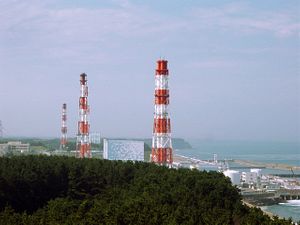On Monday, three former Tokyo Electric Power (TEPCO) executives were indicted for professional negligence contributing to deaths linked to the 2011 Fukushima Dai-Ichi nuclear power plant disaster. The executives allegedly failed to take measures to defend the plant from tsunamis despite being aware of the risks. Specifically, the judicial panel accused the executives of ignoring a 2008 internal report that predicted that a tsunami as high as 15.7 meters could hit the plant.
When a magnitude 9 earthquake caused a tsunami that hit the Fukushima nuclear plant on March 11, 2011, it knocked out power to the cooling system, which caused three reactor core meltdowns. The subsequent radiation leak forced 160,000 people to evacuate.
The earthquake and tsunami killed 18,500 people, but so far, no official determination has been made about how many people the nuclear disaster killed. The purpose of this investigation is to determine whether the executives can be held responsible for the deaths of 44 hospitalized patients and 13 others. Prosecutors claim that the 44 elderly or gravely ill patients passed away because of their move, forced by the evacuation. The other victims, including Japan Self-Defense Force members and TEPCO employees, were caught up in hydrogen explosions at the plant.
Tsunehisa Katsumata, the former chairman who stepped down in June 2012, and Sakae Muto and Ichiro Takekuro, former executive vice presidents, were charged without arrest. The three are expected to plead their innocence at trial, arguing that it was impossible to predict the size of such a large tsunami.
It will likely take at least six months for the first trial to start. If convicted, the executives could be imprisoned for up to five years or pay a penalty of up to one million yen.
A judicial review panel, made up of ordinary citizens, ruled last July for the second time that the three executives should be put on trial. Using insufficient evidence and unlikelihood of conviction as excuses, prosecutors had twice before refused to press charges. But this citizen decision forces the prosecutors’ hand.
The process of putting these executives on trial began in June 2012, initiated by 14,716 Fukushima residents. Dozens of government and TEPCO officials would have been subject to investigation under the original suit. But the victims narrowed their target, and went as far as to take this unusual step of pushing for indictment through a prosecution committee on appeal.
Miwa Chiwaki, secretary general of Fukushima Complaints Criminal Prosecution of the Fukushima Nuclear Disaster explained to CNN why this case matters so much: “No one took responsibility although an irrevocable nuclear accident happened… Clarifying the criminal responsibility of those who caused the accident will lead us to prevent the same tragedy from happening again and to create a society to live without fear of death and threat to our health. We will not give up.”
Greenpeace welcomed the decision to proceed with a criminal case. Hisayo Takada, deputy program director of Greenpeace Japan, said, “The court proceedings that will now follow should reveal the true extent of TEPCO’s and the Japanese regulatory system’s enormous failure to protect the people of Japan.”
A 2015 report by the International Atomic Energy Agency and a 2012 parliamentary report had faulted misplaced faith in nuclear power’s safety and a culture of “reflexive obedience” for the disaster, but this is the first criminal case associated with the worst nuclear disaster since Chernobyl.
Though it will be difficult to prove criminal responsibility, the process itself will hopefully shed more light on the how TEPCO handled the disaster – especially the parts TEPCO would rather cover up. It was only last week that TEPCO admitted it had failed to announce the meltdowns occurred until two months after the accident. (Until May 2011, TEPCO insisted on calling it “core damage,” contrary to the company’s emergency manual, which specifies it should have been called a “meltdown,” a more serious classification.)
Of Japan’s 43 working reactors, only four have been restarted. Though the government argues that nuclear energy is a necessary component of Japan’s energy mix, the attitude in Japan remains highly anti-nuclear. If more unsavory details about collusion between TEPCO and the regulatory agency is revealed, it could further complicate plans to bring Japan’s nuclear energy back online.

































